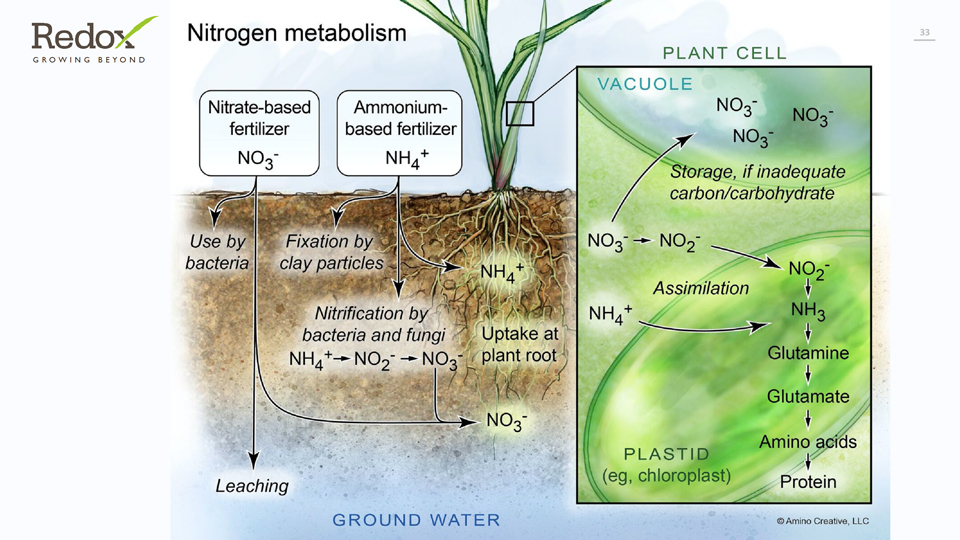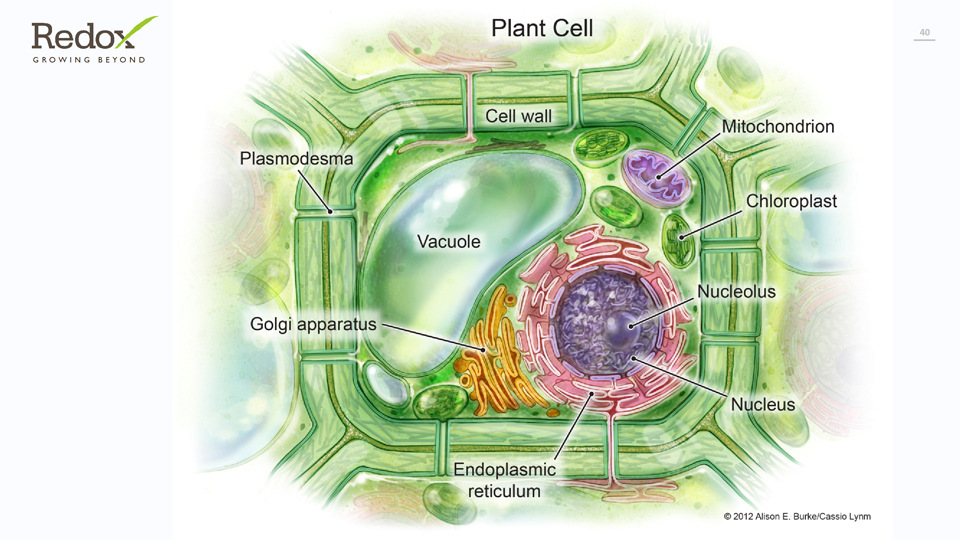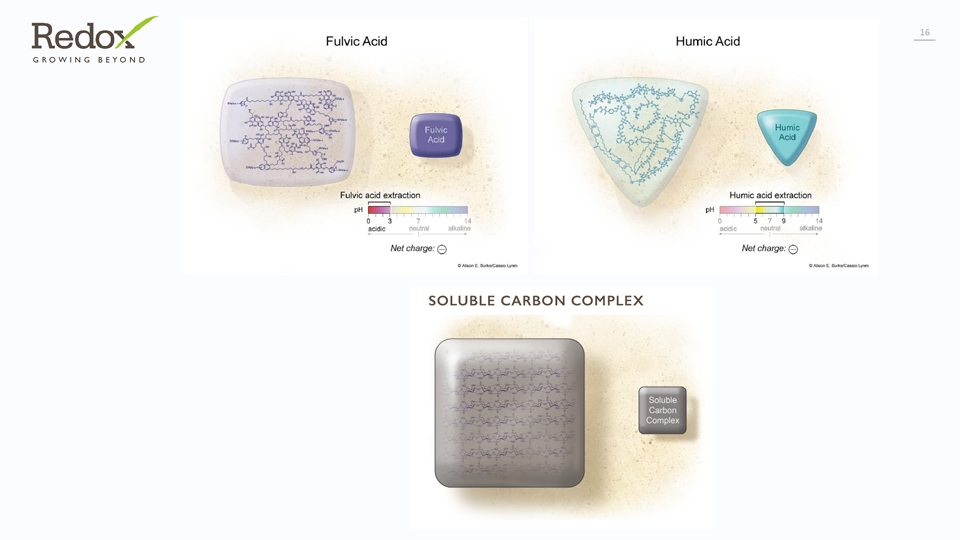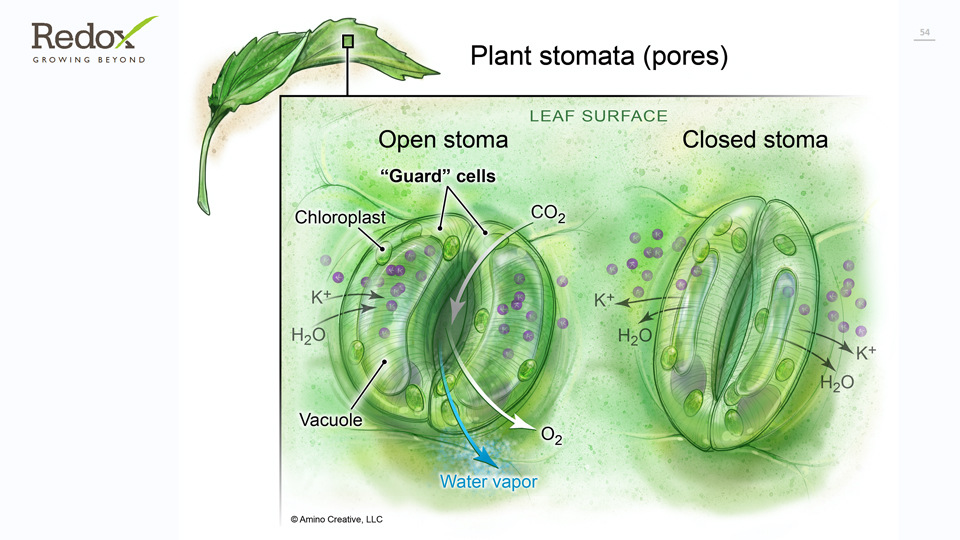The development of readily available synthetic nitrogen fertilizers after world war II has played a central role in dramatic crop production improvements. Yields have improved five-fold on average. This phenomenal advancement is often referred to as the Green Revolution. Economical and abundant nitrogen availability means that nitrogen is now rarely a limiting factor in achieving increased yields. In fact, adding nitrogen beyond what the plant is able to properly metabolize leads to reduced yields and quality. Agricultural nitrogen inefficiencies contribute to important environmental issues. In the absence of balanced nutrition, nitrogen fertilization can be highly detrimental.
Three agronomic strategies can dramatically improve nitrogen benefits:
Strategic nitrogen metabolism carbon nutrition. During critical reproductive structure development key sources of carbon tend to be the limiting factor. This is especially the case when the plant is under stress.
Assuring adequate, but not excessive, availability of nitrogen will facilitate plant nitrogen metabolism. The form, frequency, and rates of nitrogen need to be managed properly.Improving soil microbial activity will reduce nitrogen losses to the environment.
Assuring optimum plant levels of the other essential plant nutrients will greatly offset the tendency to store too much nitrate-nitrogen in the plant cells.Potassium is especially critical. An efficient root system improves the plant’s ability to absorb nutrients other than nitrogen. Redox offers effective technology for all three of the above categories.
Because of soil microbial nitrification interactions nitrate-nitrogen is the primary form of nitrogen assimilated by plants. Nitrate-nitrogen is easily taken up by plants but cannot be utilized by plants until it goes through a reduction process. Nitrogen needs to reduce to an ammoniacal form (NH2+) to combine with carbon, hydrogen, and oxygen to for the formation of amino acids. Amino acids are the building block of the plant.
Nitrate-nitrogen stored in the cell vacuole is of minimal value to the plant if the plant does not have the resources to convert it. Excess accumulation in the cells leads to chemical and physiological changes in the cells that are detrimental. Some of these effects are weaker cells which are more susceptible to abiotic and biotic stress, increased vegetative growth, and reduced reproductive crop potential. Nitrogen metabolism is the relative rate of nitrate-nitrogen conversion to amino acids.
Relative nitrogen metabolism efficiency has a profound impact on crop reproductive potential. Crops that experience efficient nitrogen metabolism will promote more reproductive structures. These can be fruiting flowers, seeds, and tubers.
A key technology for strategic nitrogen metabolism carbon nutrition is Supreme. Supreme is a reacted plant nutrient that contains soluble carbon compounds derived from a proprietary fermentation process. Supreme dramatically improves the plants ability to properly metabolize nitrogen. This can lead to improved crop set and yield potential. Supreme can be applied by foliar or fertigation application at a rate of 1-2 pounds per acre. Split applications during key reproductive stages of growth are beneficial.


Synthetic nitrogen fertilizers applied to the soil all tend to eventually stabilize in the nitrate-nitrogen form due to microbial interactions. In the nitrate form (NO3-), the nitrogen is extremely mobile in the soil and if the nitrification process is on the surface nitrous oxide is volatized. Forty to sixty percent of applied nitrogen is commonly lost to volatilization and leaching.
A simple and highly effective method for reducing nitrogen losses is the use of H-85. H-85 is a reacted soluble carbon nutrient product designed to improve soil microbial activity. It contains short, medium, and long-chain soluble carbon compounds. Improved soil biology incorporates nitrogen into biological processes effectively maintaining nitrogen in the root zone. Rates of one pound for every 40-60 units of N improve nitrogen efficiencies significantly.

A fundamental strategy to minimize crop detriment from nitrogen and allow for optimum contribution to yield and quality is to assure that the plant has balanced nutrition. Excellent potassium nutrition is vital. Potassium is a key element for plant ion balance. An outstanding tool for this benefit is diKaP. diKaP is a reacted nutrient product high in potassium and phosphorus. diKaP contains proprietary soluble compounds that promote antioxidant production. Higher antioxidant production reduces abiotic stress. Applications of diKaP applied at a rate of 1-2 pounds per acre every 2-4 weeks via foliar or fertigation are highly effective.

Subscribe to receive our Redox Bio-Nutrients updates